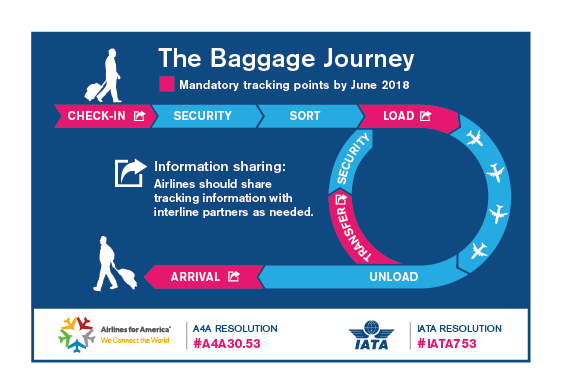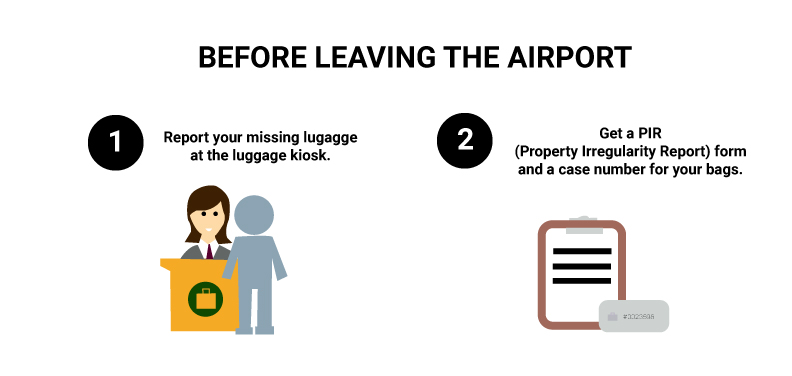Living in the age of technology brought us the possibility to track almost everything. Still, when we travel we cannot be sure that our luggage is still traveling with us, and if it is going to appear while we are waiting for it at the luggage claim.
The situation is improving despite an increase in the number of air passengers. According to SITA, an international IT provider that monitors global luggage handling, the total number of lost luggage has fallen from 46.9 million in 2007 to 24.8 million in 2018.
Not to be confused, tracking technologies do exist and they are the main reason of decreased number of lost luggage. Tracking technologies are based on radio frequency identification tag (RFID) that is placed around bag handle, by that every bag can be automatically scanned by machines on crucial points of the transportation.
Regulations
Luggage handling and passengers rights are regulated by several documents:
- Resolution 753
When it comes to official rules made by IATA due to taking better care of luggage, most recent regulation is Resolution 753. By this resolution airlines need to share the tracking information with their interline journey partners. Also, bags must be checked as present and correct at four key points along the journey:
- Passenger handover to airline
- Loading to the aircraft
- Deliver to the transfer area
- Return to the passenger

- Warsaw Convention
First signed in 1929, the Warsaw Convention provided the first set of rules for the industry of international commercial aviation. The Warsaw Convention set the standard to issue physical tickets for all air travelers and more importantly, the Warsaw Convention set damages for travelers in the event of the worst-case scenario.
- Montreal Convention
In 1999, the Montreal Convention replaced and further clarified the protections offered to travelers by the Warsaw Convention. It provides air passengers with certain rights for compensation on international flights between the countries. Therefore, Montreal Convention set damages for lost or destroyed luggage based on individual pieces. Travelers are entitled to a maximum of 1,131 SDR (Special Drawing Right) if your luggage is lost or otherwise destroyed. In addition, airlines are required to pay travelers for expenses due to misplaced luggage. As of January 2015, 108 members of the International Civil Aviation Organization have signed on to the Montreal Convention.
Airlines and lost luggage
Passengers usually see only their point of view, and damage they are paying by losing luggage. But on the other side of the story are huge expenses of airlines, trying to locate mislaid luggage. Despite having bar codes, the luggage search process is largely a manual one. It requires an airline representative to manually search the World Tracer computer system for misdirected luggage. World Tracer is a computer system used by almost every airline (over 440 worldwide) at over 2,800 airports.
Another answer for this problem is airline apps that allows passengers to track an updates of their luggage in every stage of flight. However, not everyone is interested in what is happening with their luggage. For example, S7 Airlines, Siberian carrier, that annually carries more than 16 million passengers, has a luggage -tracking app, and only half of them use this app to track their luggage.
According to SITA, the worst luggage handling performance has Europe with 7.29 mishandled luggage per 1,000 passengers annually, compared to 2.85 in North America and just 1.77 in Asia.
Delayed vs. Lost luggage
Delayed luggage
Most cases of the misdirected luggage are occurring at transfer flights, or to be specific on delayed flights when bag does not arrive to the connecting flight in time. In this case, according to FAA, within 3-7 days you will be reunited with your luggage. The procedure of following events after the have failed to connect with your transfer flight depends on the rules of an airline. In case you arrived on the airport away from home many airlines offers to cover part or all of the cost you will have to continue your business trip or vacation, some even set daily allowance, and flying with some airlines will make you satisfied with simple “We’ll get your luggage back”.
Lost luggage
If luggage doesn’t appear in 30 days it will be officially declared as lost. Cases where luggage is lost or stolen and not misdirected are rare, just 5%. If your luggage is missing, report it to the airline. Many airlines have a desk in the luggage claim area where you can file a claim, otherwise, call them. Don’t leave the airport before you fill a Property Irregularity Report (PIR) claim. The more detailed your claim, the better outcome will be. Don’t leave anything blank on the form (especially contact information) and, if you can, provide an itemized list of what you packed, including the value of each item.

The absolute maximum you can get back for lost luggage is $3,400 per person unless you purchased protection for a higher value prior to your flight. However, for the specifics you should check your carrier’s website. The airlines typically have a long list of items for which they will not be held responsible; these include jewelry, money, and other valuables. These items should always be left at home or packed in your carry-on luggage.
In cases when no one files a claim nor comes to pick up the lost luggage at the airport after few months it will be destroyed or sent to auctioneers.
In this useful video, see what to do in case of damaged or lost luggage:
Prevent lost luggage
At the end, here are some advices how to prevent lost luggage:
- Put your name and cell phone number on the outside and inside of your luggage.
- Avoid late check-ins and tight connections since they are the most common causes of delayed and lost luggage.
- Pack all valuables in your carry-on luggage, such as cameras, laptops, medication, wallets, jewelry and documents.
- Make sure the person who checks your luggage attaches the correct destination ticket to every bag, and get a claim ticket for each.
- Making an itemized list of everything in your bag can come in useful later if your luggage never turns up, or even better take photos of what you packed in your checked luggage.
- Pack a change of clothes in your carry-on luggage so you will have something to wear if your checked luggage is delayed.
- Take travel insurance, it is the best guarantee that you’ll compensate any losses







